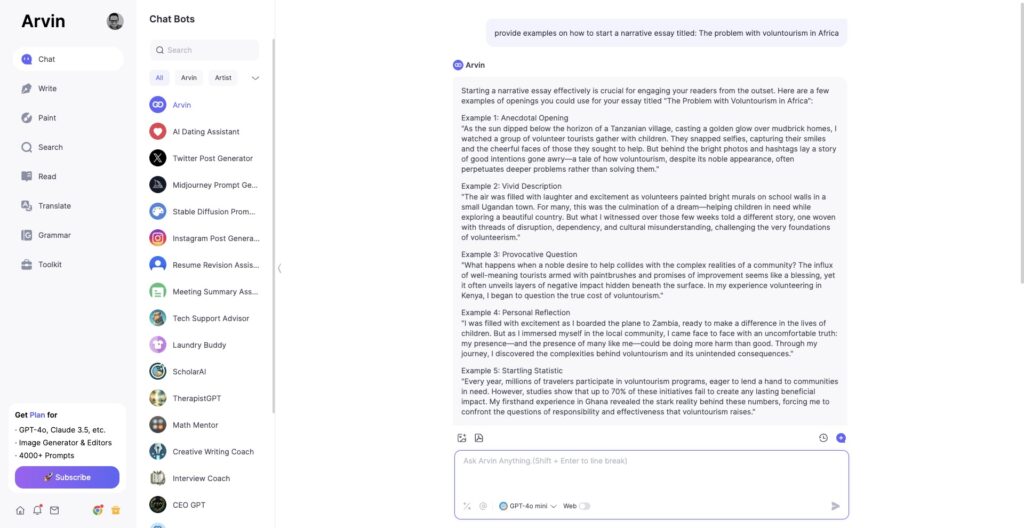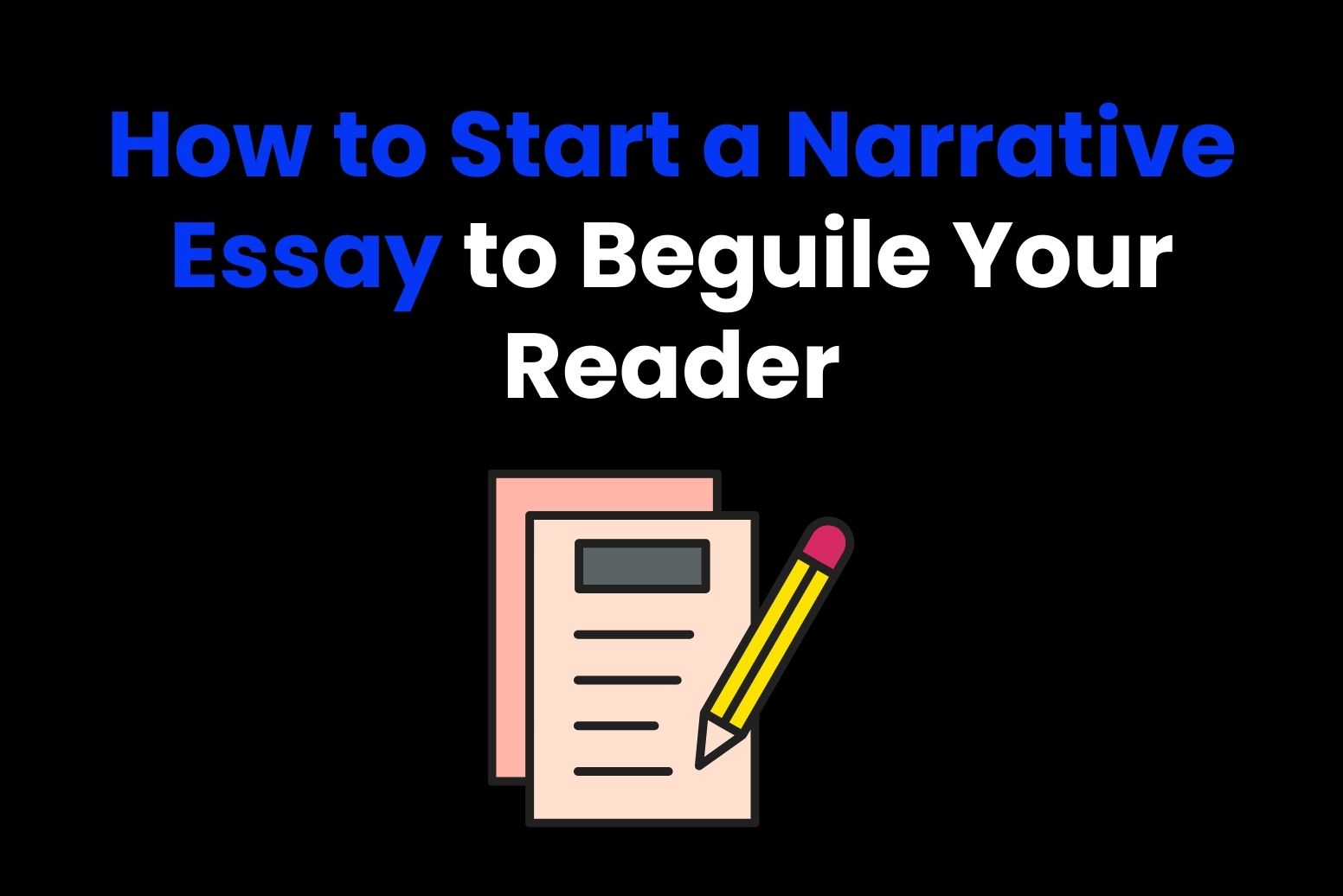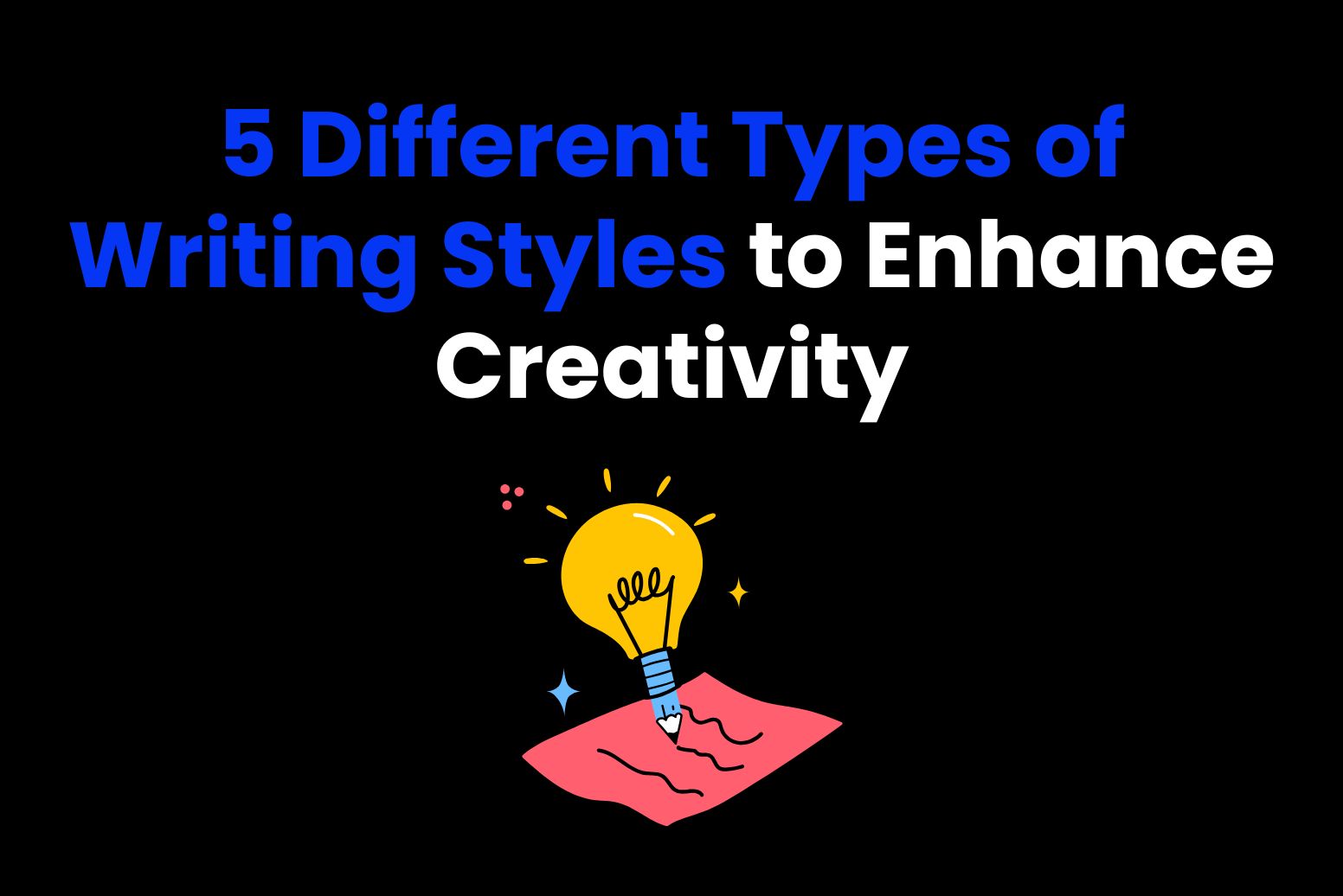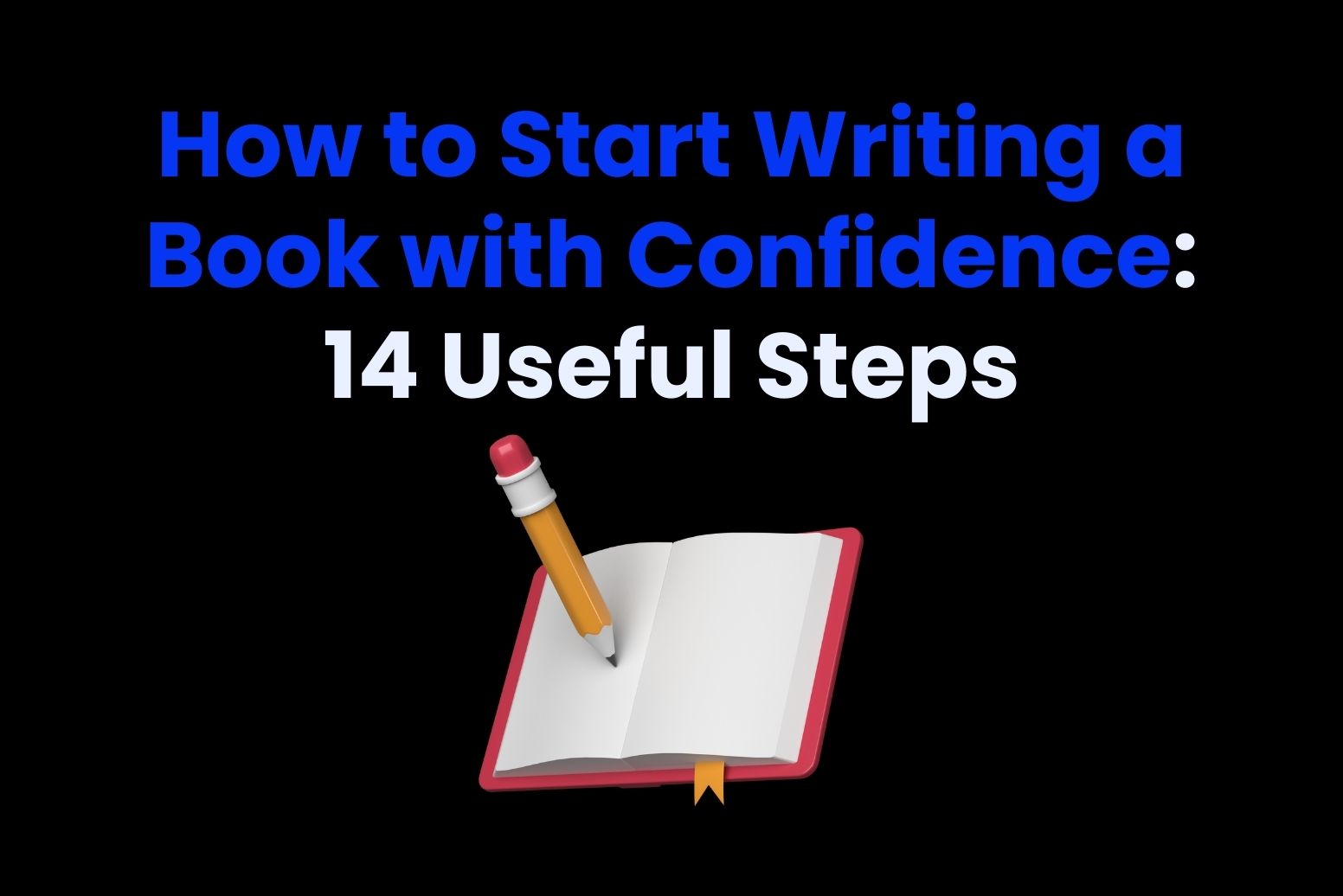Learning how to start a narrative essay will help you beguile your reader from the very start. After all, a narrative essay should be engaging and captivating, so you need to get things off on the right footing.
While most students are familiar with argumentative, expository, and descriptive essays, narrative essays are less common. Therefore, for many students, they’re more difficult to write.
With that in mind, we’ve written this article to explain what a narrative essay is and how to write one. We focus on starting a narrative essay correctly to hook your reader and deliver maximum impact.
We also show you how advanced AI tools can help you write a narrative essay or create a structure that you can follow when writing subsequent assignments.
What is a narrative essay?

A narrative essay is an academic assignment that tells a story. Some narrative essays are fictional, while others have elements of truth and fiction combined.
As narrative essays often chart personal experiences, the characters are likely to be people you know and those you have met along the way. You should be vivid, rich, and persuasive when writing your narrative essay. Therefore, a strong introduction to set the scene is vital.
Narrative is another word for story. So, this type of essay usually has a clear beginning, middle, and end. Many narrative essays form a linear narrative, which takes readers through a story in chronological order.
While many essays require students to present a thesis, a narrative essay is concerned with storytelling. Often, in an academic setting, they’re used at college as a way for students to document experiences from their own lives.
Looking for inspiration while writing your college admissions essay? Discover how to start a college essay that will captivate the admissions team.
The ideal structure of a narrative essay
When it comes to how to start a narrative essay, you must begin with the ideal structure. Unlike many academic essays, a narrative essay usually follows a chronological structure. The introduction sets the scene, the main body of the text explores the character’s lives, and the conclusion delivers the key outcomes and any lessons learned.
Below is the ideal structure, showing how to start a narrative essay the right way:
Introduction
Think of a narrative essay’s introduction as your opportunity to set the scene. You should:
- Hook the reader with a persuasive opening sentence.
- Provide sufficient background information to help the reader visualize the narrative.
- State your thesis. In a narrative essay, this is most likely to be a lesson learned rather than an argument made.
Main body
The main body of a narrative essay deals with the events of the story in chronological order. It must:
- Present the key events in a logical order.
- Develop the characters with rich, descriptive vocabulary.
- Transition from one event to the next without disrupting the flow of the story.
Conclusion
The conclusion is a summary of the plot with details of the key lessons learned from the narrative. It will:
- Summarize the story, highlighting the key events.
- Offer personal reflections and lessons learned.
- Leave the reader with a memorable takeaway.
How to start a narrative essay: Tips for the opening paragraph
There are many ways to start a narrative essay, but engaging the reader with a strong and memorable opening sentence is key. Here are some tips for opening your narrative essay:
How to start a narrative essay with dialogue
While you might start an expository essay with a famous quote, you can start a narrative essay with a section of dialogue.
Let’s assume you’re reflecting on your gap year in a college essay. You might have decided to write your narrative essay about your time volunteering in Kenya. Specifically, how the growing sector of “voluntourism” was negatively impacting local communities.
For example:
“Their parents just leave them here. They don’t have the means to look after them.” That was the first thing Mr Kadapo, the orphanage’s founder, said to me on my first day in Naivasha, Kenya.
Using dialogue is a powerful way to open a narrative, as it transports the reader directly to the heart of the story.
How to start a narrative essay with a question
Another promising way to start a narrative essay is to pose a question. This should be a question that you plan to explore throughout the essay.
Continuing with our example of a volunteering project in Africa, you could start with a question like:
“Why do so many unqualified Western volunteers feel the need to travel thousands of miles across the world to help out in “orphanages” in developing countries?”
Such an intriguing, open question prompts the reader to reconsider their viewpoint on a specific matter or topic. It’s a good strategy to employ when challenging the status quo or presenting new, potentially controversial topics.
How to start a narrative essay with a snapshot
You could also start your narrative essay by providing a snapshot of your feelings and emotions at a specific time. This is a great way to create suspense at the start of your story and to give the reader an insight into what’s to come.
Again, sticking with our example in Africa, your opening sentence might look something like this:
“The silence was deafening. 100 children, parents unknown, stared across the room at me. They didn’t move. They weren’t smiling. There was no chatter. It was as if they were waiting for me, the newest arrival, to tell them something they didn’t already know about their current circumstances.”
This literary technique transports the reader into the situation you’re describing. When narrating something that isn’t well-known, it’s a useful strategy and it can help with visualization.
How to start a narrative essay with a statistic
Although starting with a statistic might be a better option when writing an argumentative or expository assignment, it can also work in a narrative essay.
The idea is to hook and shock the reader simultaneously. You can then follow up on the statistic with details on how it relates to your story.
For example:
“80 years of international research has shown that growing up in institutional care violates a child’s rights, harms their physical and cognitive development, and exposes them to a higher risk of abuse and neglect.”
In this example, we could go on to explain how, through no fault of their own, children were being placed in huge numbers in orphanages because their parents were paid to give them away, among other factors.
Such a revelation at the start of a narrative essay would be shocking. It would undoubtedly encourage the reader to continue to find out more about the statistics and reality.
How to start a narrative essay with a sound effect
Another literary tactic you might wish to employ at the start of your narrative essay is the introduction of a sound effect. This might be “BANG, SNAP, AHH, CRASH, etc.”
This is an overt way of drawing the reader’s attention to the beginning of your essay. It can be impactful, but only when used sensibly and appropriately.”
For instance:
“CRASH!” An avocado dropped from its tree onto the thin, rusting iron roof of the orphanage. It awoke me to my senses and made me question: what impact can I truly make at this failing institution in the heart of Kenya’s dry, drought-prone heartlands?”
Famous examples of narrative essays for inspiration

One of the most famous examples of a narrative essay is Ralph Waldo Emerson’s Self-Reliance. The author spends time living in the woods, charting his journey away from civilized society and presenting detailed, introspective writing that has earned its place as one of the best-respected narrative essays in American literary history.
Much of Mark Twain’s writing can be regarded as narrative, too. Though much longer than standard essays, much of his travel narratives are credited with creating the travel literature genre. He famously said that “travel is fatal to prejudice, bigotry, and narrow-mindedness,” writing memorable narratives in The Innocents Abroad, Life on the Mississippi, and Roughing It, among others.
Another legendary travel writer known for his narrative essays and spell-binding travel books is Michael Palin. The British author has penned numerous diaries, essays, and books over the years, documenting travels from the Sahara to the Pacific Rim. A prolific diarist and narrator, Palin said: “I started keeping a diary in April 1969. It was always intended as a record of the way I spent my days, and nothing more than that.”
For inspiration on how to start a narrative essay, Palin’s travel journals are a brilliant place to begin.
Not writing a narrative essay? Other essay types to be aware of
Narrative essays are distinct from other common forms of academic assignments. As mentioned, they’re commonly written by college students, and may also be required of English Literature students to show creative writing. Alongside the narrative essay, other common essay forms include:
- Expository: This type of essay explains, illustrates, or presents a topic or set of ideas. They are set to showcase a student’s understanding and knowledge of a specific topic.
- Descriptive: In a descriptive essay, the writer should show creative writing skills and the ability to use metaphors, advanced prose, and imagination. Descriptive essays might be in the form of a personal analysis of a set literary text.
- Argumentative: As the title suggests, an argumentative essay requires the writer to present a specific argument from multiple perspectives. It might include opinion pieces, debates, or positions on a specific government policy, for instance.
Need help with starting your narrative essay?
Though we’ve extensively covered how to start a narrative essay in this article, you can also use Arvin’s AI tools to help you. You can prompt Arvin to create a structure for your essay or, as illustrated below, how to start a narrative essay:

As you can see, Arvin has provided five ways to start this narrative essay, which are similar to those already introduced above. If you use AI to help you, don’t forget to personalize the recommendations to suit your narrative essay title.
The verdict: How to start a narrative essay to captivate your reader
You can start a narrative essay in various ways. Kick things off with a dramatic sound effect, ask a question, or drop an alarming statistic. Each of these methods can captivate your readers and encourage them to continue reading.
You can also use our AI tools for idea generation and for further inspiration when writing academically. For instance, learn more about writing a persuasive essay here and follow our blog for the latest writing tips, tools, and guidance.
How to start a narrative essay FAQ
How do you write an introduction for a narrative essay?
Begin with a strong, captivating sentence that captures your reader’s attention. This might be a sound effect, statistic, snapshot, or part of a dialogue. Make sure it’s compelling and relevant to the story you’re about to tell.
What is the best sentence to start a narrative essay?
You have many options when starting a narrative essay, but the sentence must be concise and engaging. We recommend using part of a key dialogue to introduce a character or refer to a statistic that shocks the reader. These techniques will hold your reader’s attention and get things off to a positive start.
What is an example of a narrative essay?
One of the best-known examples of a narrative essay is Self-Reliance by Ralph Waldo Emerson. James Baldwin’s Notes by a Native Son is another narrative essay example that you may wish to read before writing your assignment.
Is a narrative essay the same as a story?
A narrative essay is similar to a story, but it’s not the same. Rather, an essay tends to be a shorter, more concise re-telling of a specific event in chronological order with only the key characters mentioned. A story likely has a wider cast and will likely go into further details.








